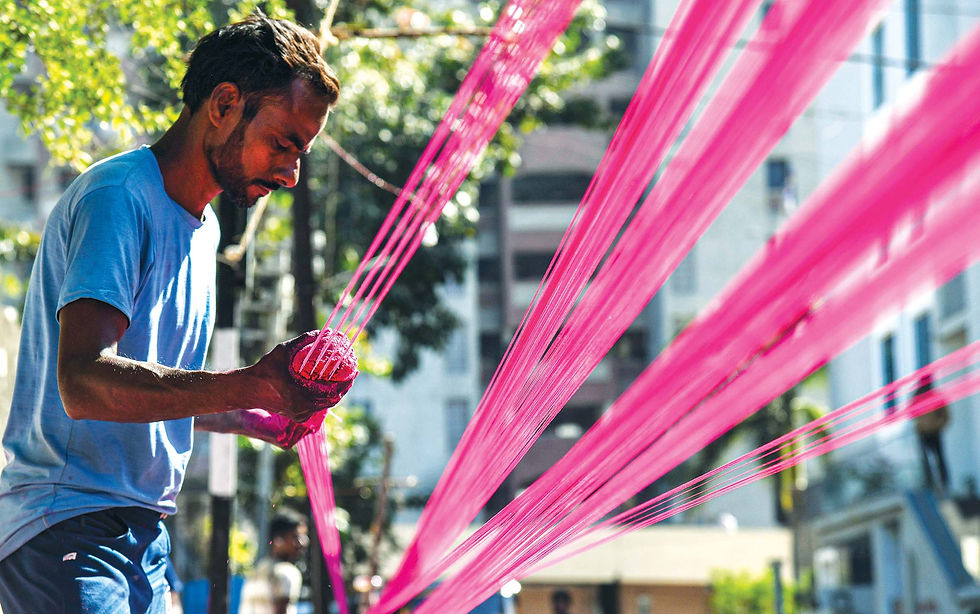More Than a Streak of Red
- Major (retired) Mohommed Ali Shah

- Jun 1
- 3 min read
The detractors quibbling over the semantics of Operation Sindoor ought to realize that in the streak of sindoor, the Armed Forces find the heartbeat of a nation worth protecting.

These past days, we have all asked quietly, sometimes aloud: are the terrorists truly gone? Has the operation ended? Or is the story still unfolding under the hush of a ceasefire? As a Defense Analyst who speaks actively on many news channels, I know television may run out of airtime, but the questions that linger in the minds of people rarely do. Among the many images that have emerged from this mission, the one that stays with me is not of rifles or ranks, but of sindoor. That thin, red streak was a symbol, a thread back to hope, and a path home.
This symbol carries a meaning deeper than what meets the eye. As an Indian Muslim, I may come from a tradition where our wives do not wear sindoor. But that does not mean I am unfamiliar with its quiet power. We grow up in India immersed in one another’s customs, shaped by an invisible but deeply emotional understanding of symbols that may not be ours by practice, but are certainly ours by heart. That red streak tucked into the parting of a woman’s hair is more than ornament. It is memory. It is identity. It is a sacred bond, a silent contract that says someone is waiting, someone is hoping, someone is loved. And in times like these, that small sign speaks louder than any words.
I wasn’t there in Pahalgam on April 22 when the dastardly, cowardly terrorist attack took place, or in uniform when Operation Sindoor unfolded. But I have worn the olive green with great pride. I’ve stood in places where silence is thick with meaning, and the smallest symbols speak volumes. In such moments, that streak of sindoor tells us all we need to know—who we are fighting for, and who must be brought home. These are the moments that reveal the heart behind the mission.
India has always placed faith in its women, not just in name, but in action. From Colonel Sofiya Qureshi of the Indian Army to Wing Commander Vyomika Singh of the Indian Air Force, Lt Cdr Dilna K, Lt Cdr Roopa A who of the Indian Navy who crossed Point Nemo, the remotest location on earth. Women have been the face of competence and resilience. They lead with capability and command with strength, and not for show or symbolism. Some wear sindoor too, proving that leadership and love, duty and devotion, can go hand in hand.
Operation Sindoor was not just a name. It was a coded but profound promise. A silent assurance that when India reaches out to protect her people, she does so with both courage and compassion.
Almost two decades ago, I was chosen to come to Delhi from Nagaland to lead the Assam Rifles marching contingent for the prestigious Republic Day Parade in 2008. I had strongly advocated for a full women’s contingent to be featured, voicing this vision from the Army Chief’s residence, speaking from a stage literally built on a treetop, where the top brass of the country sat, from the President to the Prime Minister. At that time, it felt like a distant dream. But when it finally happened—and it was the Assam Rifles that led the way—I watched them march down Rajpath (as it was then called) with precision and pride, and it felt a promise fulfilled. That moment wasn’t about ceremony but about legacy. And legacy is not built overnight, but quietly, echoing across generations.
That same legacy lives in the sindoor that many may dismiss as mere tradition. When a woman applies that red streak, she is not submitting; she is committing. It is not about ritual but about responsibility. And when that mark became part of a mission’s name, it reminded us that symbols matter. Emotions matter. These are the unseen threads that tie us to each other, and to our shared purpose.
In uncertain times, headlines may confuse, ceasefires may raise questions and silence may feel hollow. But the sindoor remains. It remains as a sign of love, of hope, of enduring faith. And as long as it does, so does our duty to protect that faith, to honour that love, and to remember who we serve. Mission Sindoor is not over. It lives on in every act of courage, every quiet prayer, every heartbeat that dares to hope. Because sometimes, the red on a soldier’s chest is called courage. And sometimes, the red on a woman’s forehead is called faith. And in both, our nation finds its reflection.
Nation first. Always, and every time. The emotions of a nation must be carried together. Jai Hind.
(The writer is an Army veteran. Views personal.)





Comments